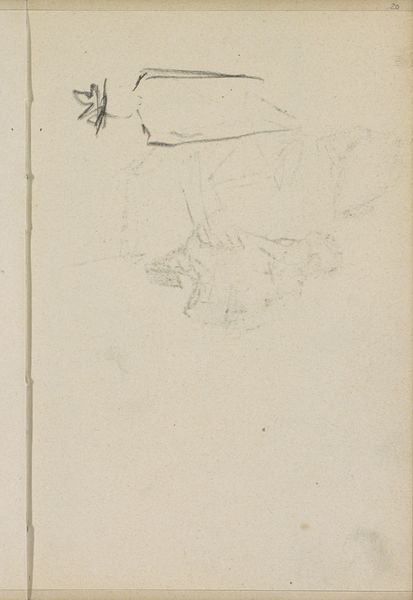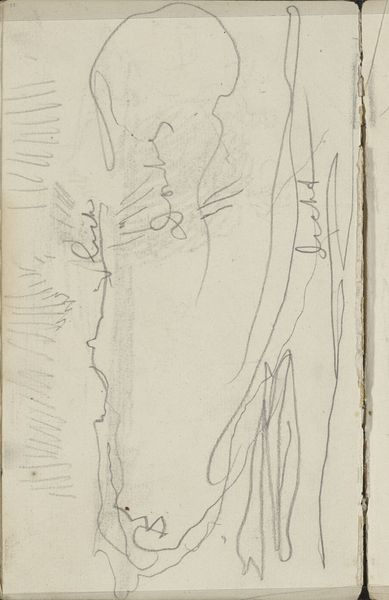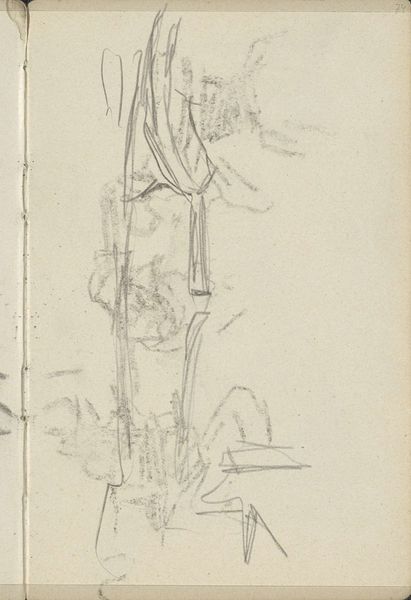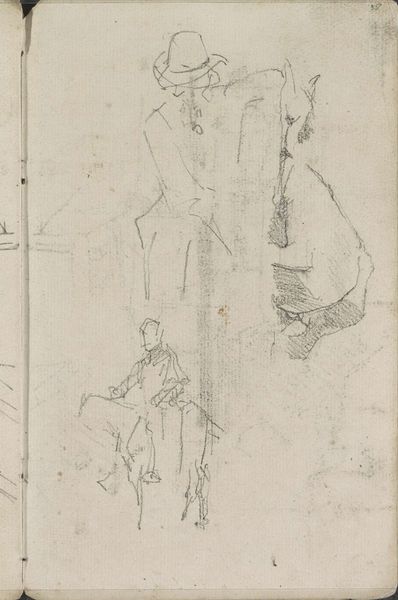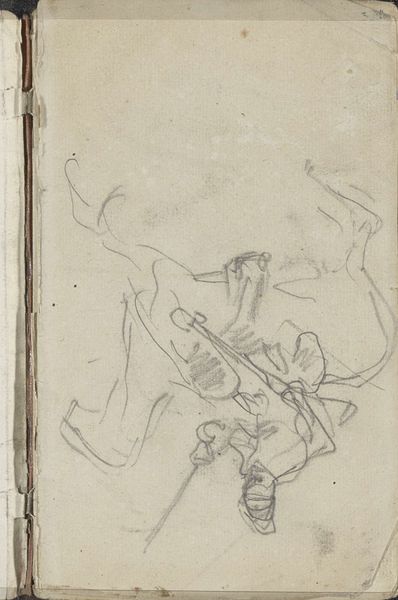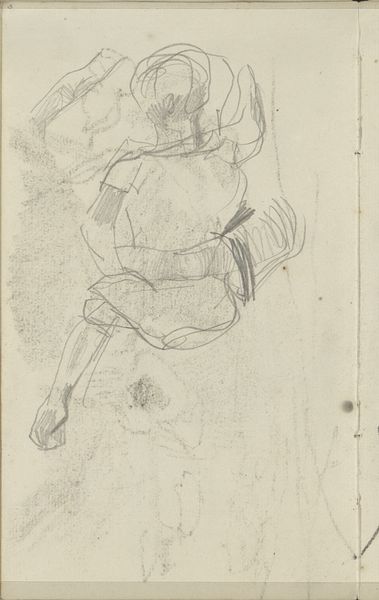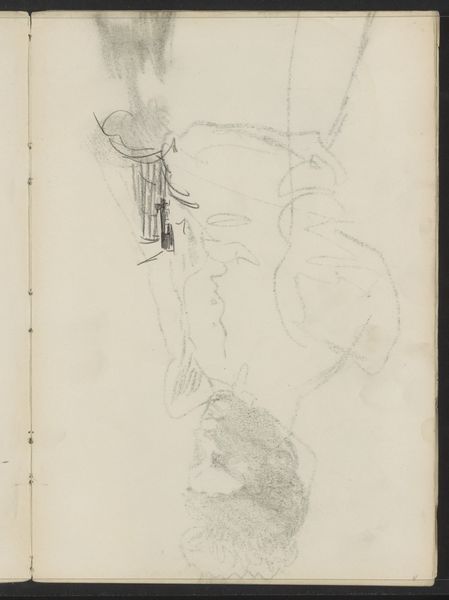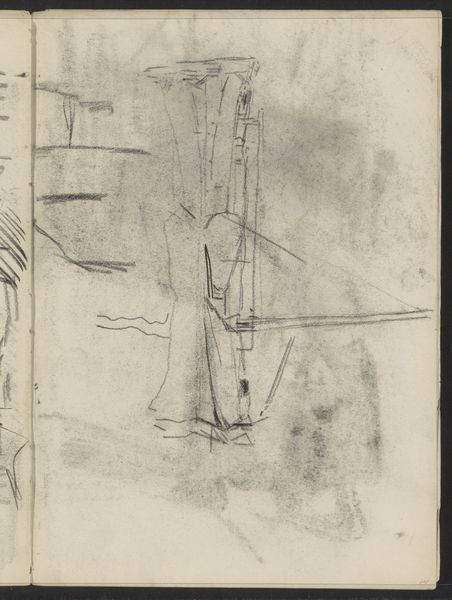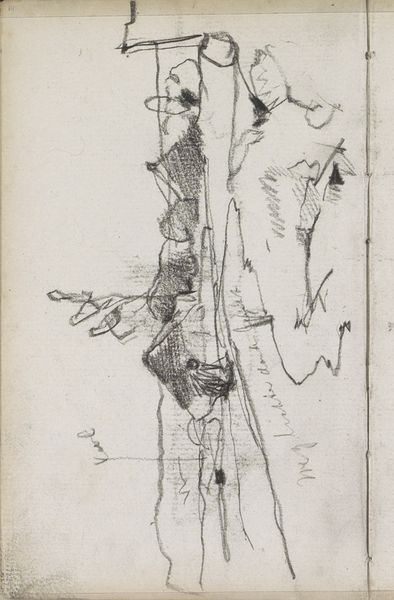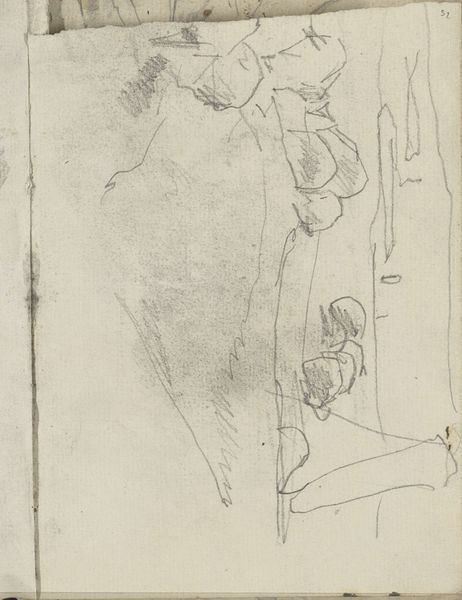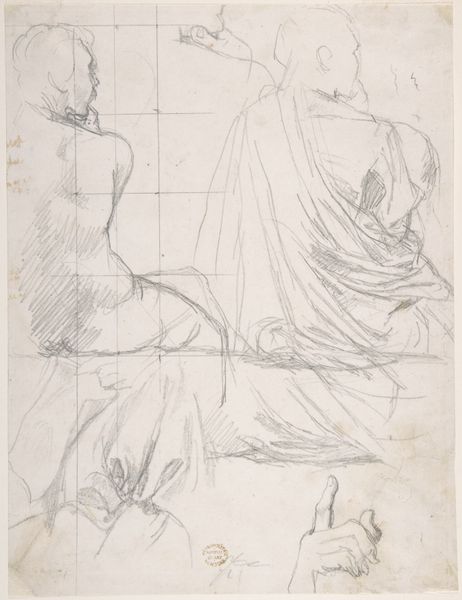
drawing, pencil
#
portrait
#
drawing
#
impressionism
#
pencil sketch
#
figuration
#
pencil
#
realism
Copyright: Rijks Museum: Open Domain
Curator: Here we have a pencil drawing by George Hendrik Breitner, made between 1880 and 1882. It's titled "Staand naakt met uitgestoken armen," or "Standing Nude with Outstretched Arms." Editor: Well, right off the bat, it's like peering into the artist's mind, isn't it? It’s not polished; it's raw. All those faint lines suggest he was searching for the form. I almost feel like I'm not supposed to be seeing this, like it's a page ripped from a very personal sketchbook. Curator: Exactly! These sketches provided a vital function for artists in the late 19th century. As artworks, these drawings allow modern-day museum audiences to study a figure through an artist's preliminary stages. Editor: Preliminary indeed. She's very much a ghost of a woman, isn't she? All the limbs and edges slightly out of sync. Not that the imprecision bothers me. There’s an energy to it. The artist wants to capture the essence, not a photographic likeness. Curator: And, of course, Breitner, along with others in the Amsterdam Impressionist circle, turned to urban life and everyday people. We see his engagement with Realism here, as well. What we might see as "unfinished" reflected the move toward modern subject matter. Editor: Interesting point. Though to my eye, "everyday" might be a stretch. She's posing. You feel that self-consciousness, that performative aspect. All those outstretched limbs give her presence, even within the tentative nature of the lines. It's more honest somehow. Less about idealizing, more about grappling with the real, fleeting human form. Curator: And her social role is interesting too. This drawing reflects an increase in institutions in the Netherlands making use of live female models in art classes in the late 19th century. Even the use of drawing as a process increased its prominence in the Academy as students focused more on anatomical and perspective precision in academic figure drawing. Editor: Hmmm… all that artistic infrastructure somehow misses that immediate vulnerability. It feels less about formal lessons and more like the kind of intimate study artists do to just... figure out the world and all the bodies in it. Curator: A final word, then? Editor: I’d say to let this raw little thing take your time; don’t expect all of her secrets right away. Curator: Agreed. Come back a second or third time—each view reveals another glimpse into both Breitner’s process and the public culture of art.
Comments
No comments
Be the first to comment and join the conversation on the ultimate creative platform.
